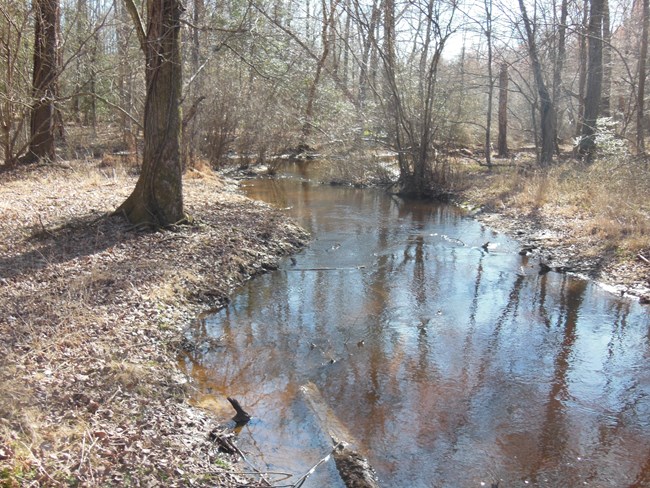Last updated: April 7, 2025
Article
Approaching the end, the Battle of Dinwiddie Courthouse

American Battlefield Trust
Recipient: Virginia Department of Conservation and Recreation
Amount: $44,448.00
Acres: 8.0
On March 31, 1865, Union and Confederate forces clashed in the vicinity of the Dinwiddie Courthouse, near Petersburg, Virginia. By this time in the war, the Confederates were facing several Union Armies laying siege to Petersburg, which strained southern supply lines and diminished their ability to sustain an effective defense. Attempting to outflank the southerners, Major General Philip Sheridan’s cavalry, from the Union Army of the Shenandoah was briefly stalled by a Confederate counterattack, northwest of the courthouse, but they were not decisively defeated. Reinforced by Union infantry, Sheridan resumed the advance the next day, and decisively broke through the Confederate lines at the Battle of Five Forks. Ultimately, within the space of ten days following that defeat, General Robert E. Lee would surrender the Confederate Army at Appomattox Courthouse on April 9, 1865.
The property protected by this Battlefield Land Acquisition Grant is situated on the east side of Chamberlain’s Bed Creek at Fitzgerald Ford, an important crossing that was successfully defended by Union forces against repeated assaults by Confederate General Fitzhugh Lee’s cavalry during the battle at Dinwiddie Courthouse. It remains unimproved and is mostly wooded but was likely used for agricultural purposes at the time of the Civil War.
Battlefield Land Acquisition Grants from the NPS American Battlefield Protection Program empower preservation partners nationwide to acquire and preserve threatened Revolutionary War, War of 1812 and Civil War battlefields. In addition, the program administers three other grant opportunities: Preservation Planning Grants, which are open to all sites of armed conflict on American soil, and the newly authorized Battlefield Restoration and Battlefield Interpretation Grants. This financial assistance generates community-driven stewardship of historic resources at the state, tribal and local levels.
